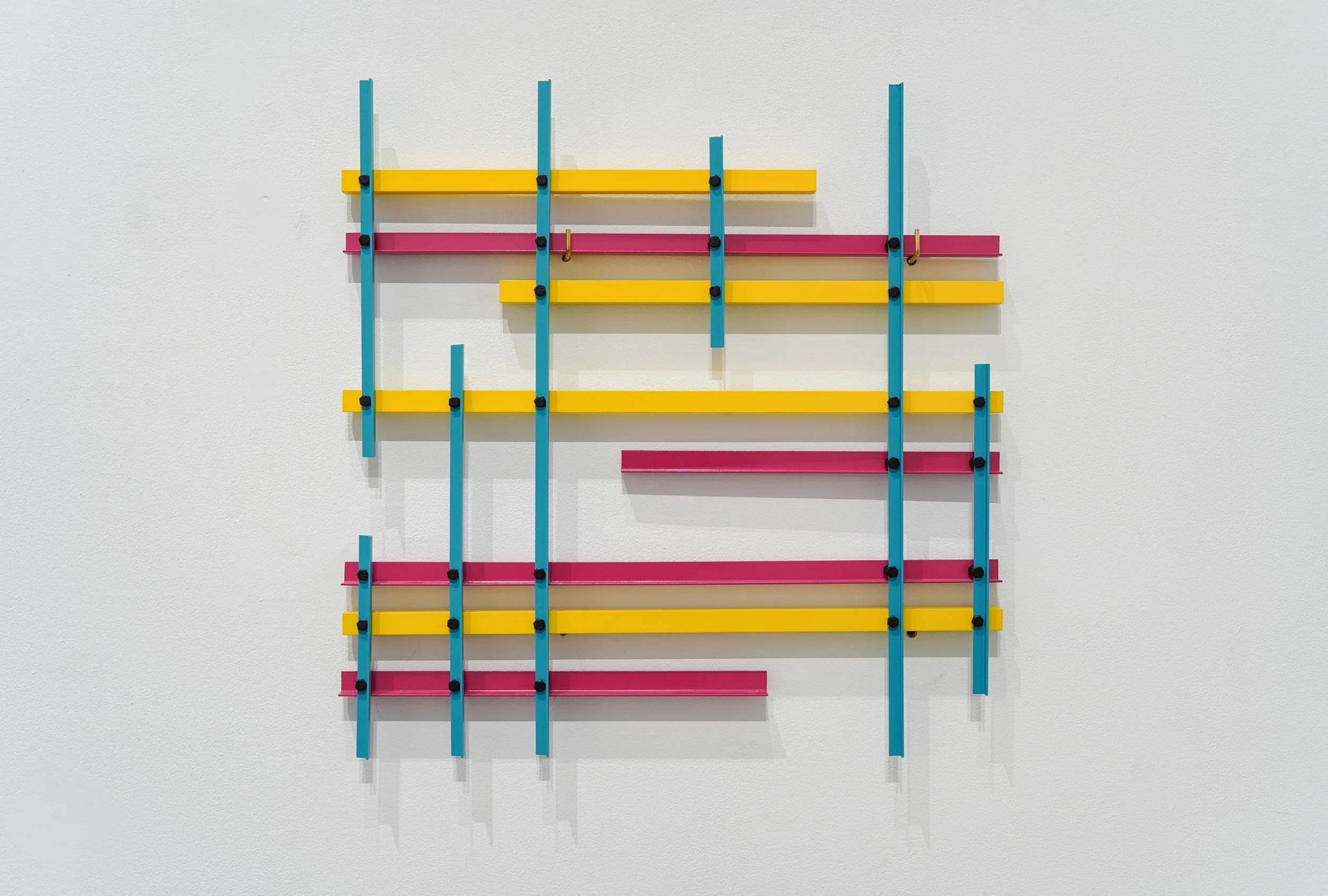

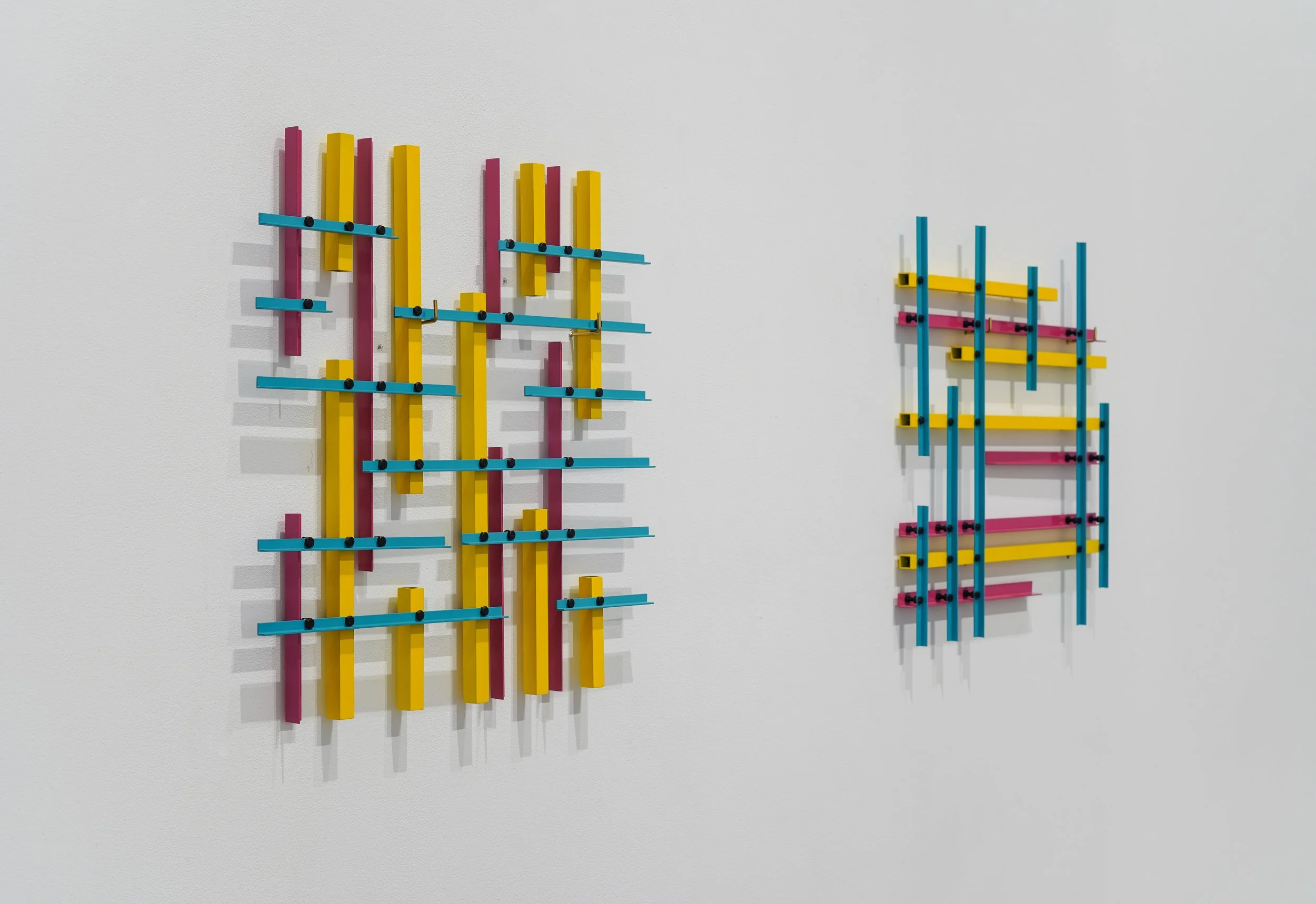
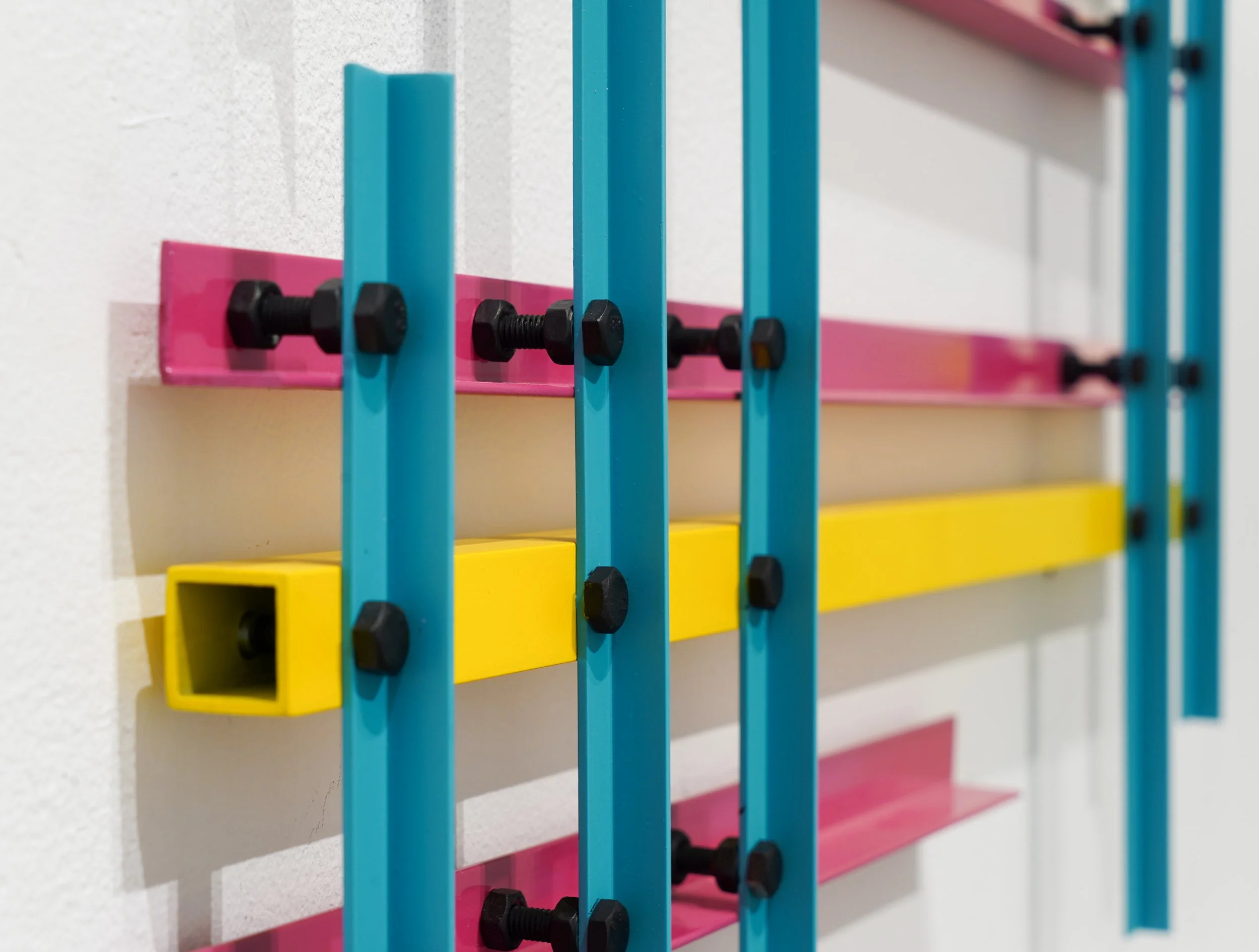

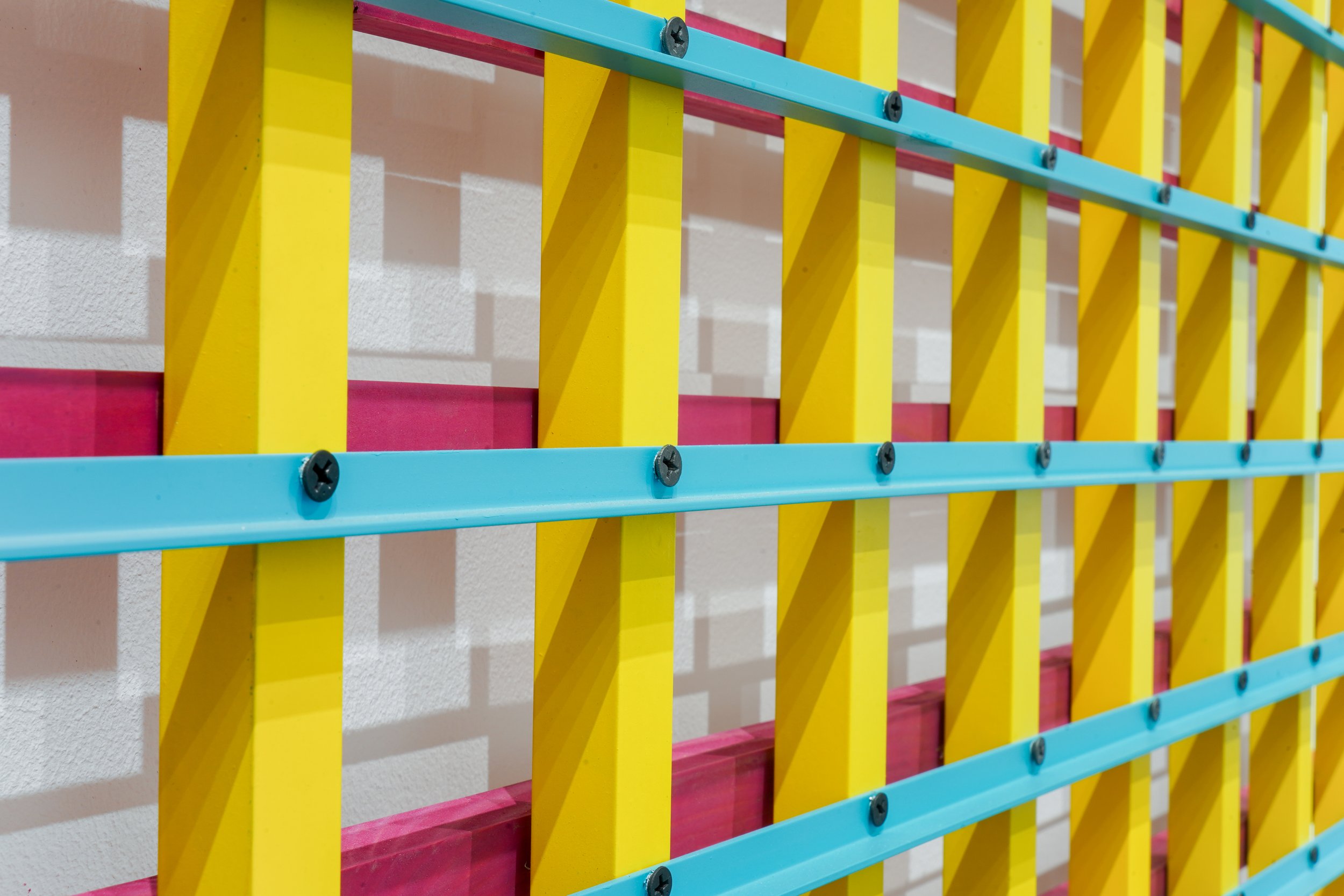

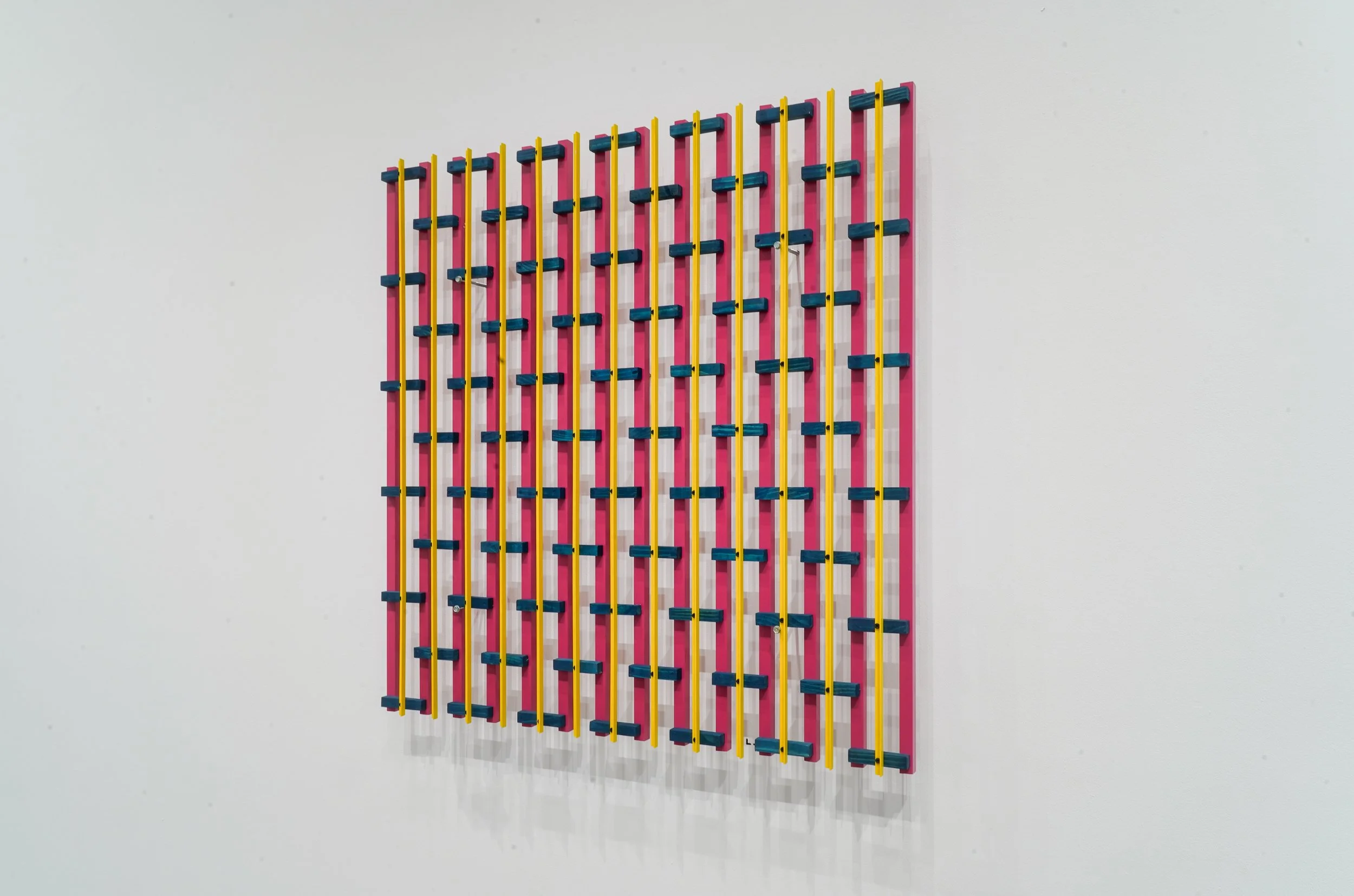
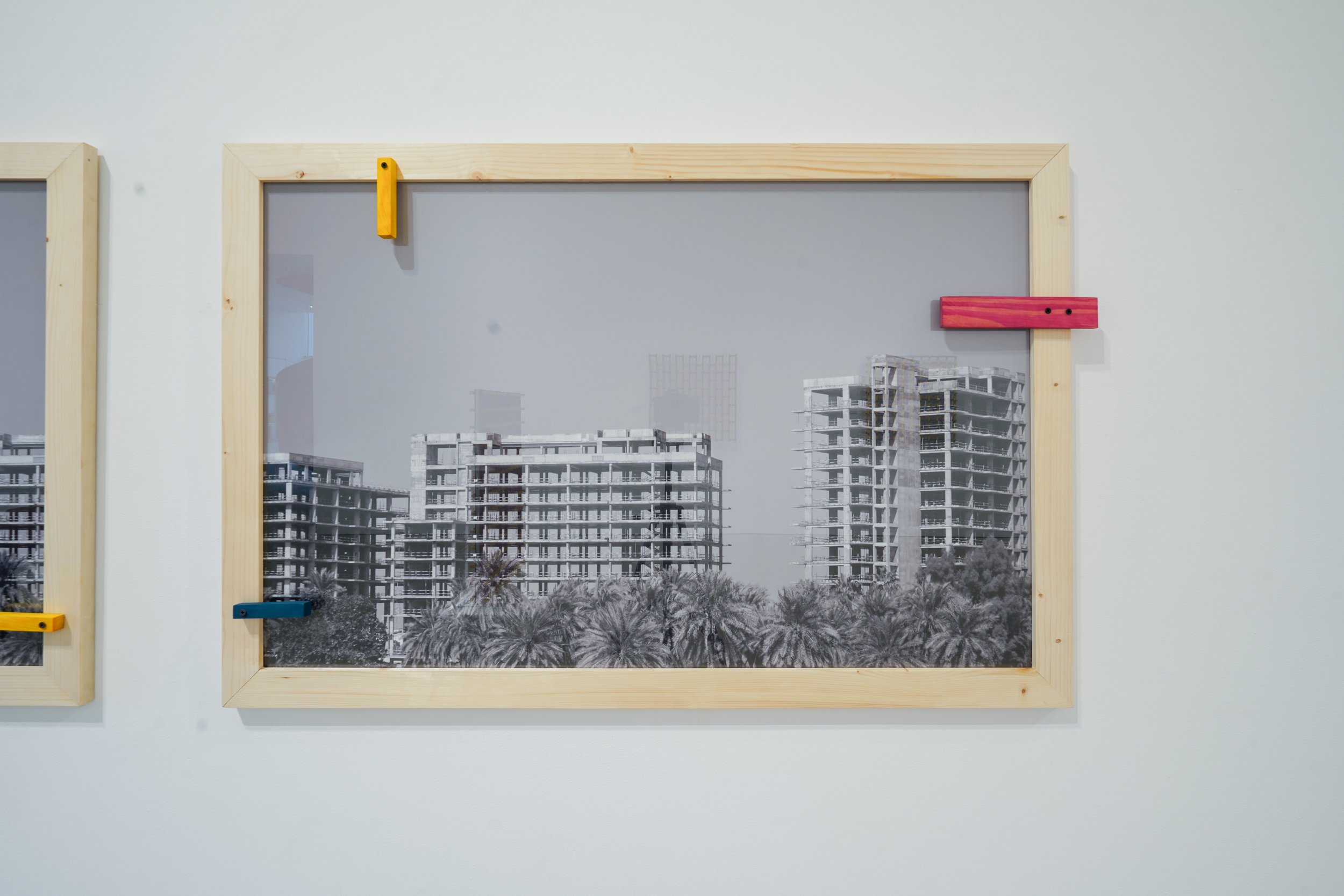




Nature’s Designs
Our life is an apprenticeship to the truth that around every circle another can be drawn; that there is no end in nature, but every end is a beginning and under every deep a lower deep opens - Ralph Waldo Emerson
Constructivism: We See Things as We Are presents two movements in time simultaneously. The first implicates an artist looking back at the origins of her practice and the second is a forward motion, pushing beyond familiar parameters and into the abstractions of color, structure and space. This solo exhibition by Zeinab Alhashemi at Leila Heller Gallery is multi-layered. Her concerns unravel from the gridded structures of the city and the patterns of the natural environment to a deep understanding of the body, prosthetics and hybridity.
Alongside welded metal mesh, scaffolding, camel leather and neon tubes, the oversized, ubiquitous concrete block is one of the materials Alhashemi used early in her practice. She was drawn to its rawness and the idea of being in process or incomplete, as part of urban development that could not be grasped by the human.
In contrast, the metal and wood sculptures in this exhibition serve as a sculptural blueprint, in CMYK code - structures for an injured body. They are less about becoming and more about providing a supportive backbone. With her work, Alhashemi recalls a car accident in which her own body had to be held and screwed into place by metal. She constructs her sculptural grids using nuts and bolts in the same manner as orthopedic surgery. Her relationship to materials in fact, has become inextricable to her relationship with her body.
Alhashemi plays with color and repetition to evoke a symmetry, alluding to the ways in which the brain is designed to subconsciously see geometry as perfection. The eye captures what it cannot measure. Yet her subtle deviations from repetitive angles don’t affect the overall harmony of her pieces which achieve an equilibrium through perpendicular lines. As Wassily Kandinksy put it, “Form often is most expressive when least coherent. It is often most expressive when outwardly most imperfect, perhaps only a stroke, a mere hint of outer meaning.” Inspired by the Bauhaus movement, color and geometry become compositional elements in her work, with a Piet Mondrian sensibility.
Alhashemi has always been interested in complex, intersecting systems, science and art. She has recently conducted research on the geometries of outer space and the applications of vesica piscis - the converging of two disks with the same radius - considered one of the first steps in constructing an equilateral triangle, elements of which can be found when stars collide or a new star is born.
Interested in the algorithms and patterns that exist in nature and in the universe, the scale of Alhashemi’s art translates from the micro-level to the macrocosmic. The architectural sense of interconnectivity in her work expresses a keen eye for measurements and proportions such as with the golden ratio and the Fibonacci sequence, in which a combination of numbers and forms is linked to longevity. The grid, a spatial exercise in which she can exert both control and deviance, is a feature she always returns to. With both freestanding forms (at different scales) and wall hangings, her latest sculptures embody movement and texture through the use of degradations of color - the wood grain is layered with paint at various levels of saturation and the color changes from one facet to the other.
Despite the rigor and discipline of the lines in her work, Alhashemi experiments with the porosity of boundaries. An inspirational image is the skeleton of an unfinished building she documents over time. It stands outside her window from when a canal was constructed. Like an exposed form in the city, in the middle of a manmade environment, violent urban intervention gives rise to her visual language, a language of solid frames on which to build upon. Alhashemi is fascinated by the duality between nature and industry, a vision though often projected by the external environment, is linked to an understanding of internal dynamics. For her, the natural and the artificial occupy the same space.
This is a series of work that maps a body’s response to rapidly morphing environment and the impact of that environment on the body. It is about hybrid states of being in which the natural elements can no longer be distinguished from synthetic forms. In Alhashemi’s structuring of time, change and adaptation, she also bears witness to a certain immobility or fixity, a duality, the unity in multiplicity, and the nature of coexistence between the body and the machine.
Written by: Nadine Khalil